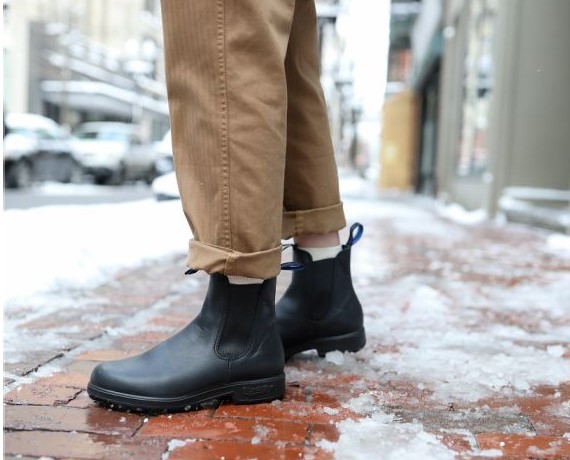
Navigating Winter in Style: A Comprehensive Guide to Winter Boots
Winter is a season of contrasts – crisp, refreshing air coexists with biting, cold winds and snow-covered landscapes. While the picturesque scenes might evoke a sense of wonder, the reality is that winter can be challenging, especially regarding footwear. In this guide, we’ll delve into the world of winter boots, exploring the diverse options available, their features, and tips on selecting the perfect footwear to keep your feet warm and stylish in the coldest months.
Understanding the Importance of Winter Boots
Winter boots are not just a fashion statement; they are a practical necessity to protect your feet from the harsh elements of winter. A good pair of winter boots offers insulation, traction, and waterproofing, ensuring your feet stay warm and dry in challenging conditions. Let’s break down the key components of winter boots that make them indispensable during the colder months.
Insulation:
One of the primary functions of winter boots is to provide insulation against the cold. Insulation materials trap and retain heat, keeping your feet warm even in freezing temperatures. Common insulation materials include:
Thinsulate: A lightweight and effective insulation material that provides warmth without adding bulk.
PrimaLoft: Known for its water-resistant properties, PrimaLoft offers excellent insulation, retaining heat even when wet.
Wool: Natural and breathable, wool is a classic choice for insulation, offering warmth and moisture-wicking properties.
Waterproofing: Defending Against Winter Wetness Snow and slush are inevitable companions during winter. Ensuring your boots are waterproof is crucial for keeping your feet dry. Look for boots with waterproof membranes such as Gore-Tex or eVent, which prevent water from entering while allowing moisture to escape, keeping your feet comfortable and dry.
Traction: Navigating Slippery Surfaces
Icy sidewalks and snow-covered paths can turn a casual stroll into a slippery ordeal. Winter boots with robust traction systems are essential for maintaining stability in challenging conditions. Features to look for include:
Vibram Soles: Renowned for their durability and grip, Vibram soles provide excellent traction on various surfaces.
Lug Patterns: Deep, multidirectional lug patterns enhance traction on snow and ice, reducing the risk of slips and falls.
Choosing the Right Winter Boots
Selecting the perfect pair of winter boots involves considering various factors, from the climate in your region to your intended activities. Here’s a step-by-step guide to help you make an informed decision.
1. Determine Your Insulation Needs
Consider the average winter temperatures in your area. If you experience extremely cold conditions, opt for boots with higher insulation ratings, ensuring your feet stay warm even in the coldest weather.
2. Assess Waterproofing Features
If you anticipate encountering wet conditions, prioritize boots with reliable waterproofing. Check for features like sealed seams and waterproof membranes to guarantee water resistance.
3. Evaluate Traction Requirements
Think about the terrain you’ll be navigating. Choose boots with superior traction if you’ll be walking on icy sidewalks or snowy trails. Look for aggressive lug patterns and non-slip outsoles for enhanced stability.
4. Consider Boot Height
The height of your winter boots can impact their performance. Higher boots provide better ankle support and keep snow from entering, but they may be bulkier. Consider your comfort preferences and the specific demands of your winter activities.
5. Explore Different Styles
Winter boots come in various styles, from traditional snow boots to fashionable ones. Choose a style that suits your taste while ensuring it meets the practical requirements of winter weather.
Popular Winter Boot Styles
1. Snow Boots: Classic Winter Warriors
Snow boots are designed for maximum insulation and protection against snow. They typically feature a waterproof outer layer, insulation materials, and a high shaft to keep snow out. It is ideal for activities like snowshoeing or walking through deep snow.
2. Insulated Hiking Boots: Versatility and Performance
Insulated hiking boots provide warmth and support for those who enjoy winter hikes. Look for features such as insulation, waterproofing, and durable soles to handle various terrains.
3. Fashionable Winter Boots: Style Meets Function
Modern winter boots blend fashion with functionality, allowing you to stay warm without sacrificing style. These boots often incorporate insulation, waterproofing, and trendy designs, making them suitable for urban and outdoor settings.
Taking Care of Your Winter Boots
Investing in a quality pair of winter boots is just the first step. Proper care ensures they remain effective and stylish throughout the winter season. Here are some tips for maintaining your winter boots:
1. Clean Regularly
Remove dirt, salt, and other debris promptly to prevent damage to the boots. Use a soft brush or damp cloth for cleaning, and avoid harsh chemicals that can degrade waterproofing.
2. Waterproofing Treatment
Reapply waterproofing treatment periodically to maintain the boots’ water-resistant properties. This is especially important if you notice water no longer beads on the surface.
3. Allow for Drying Time
After wearing your boots in wet conditions, allow them to air-dry thoroughly before storing them. Avoid using direct heat sources, as excessive heat can damage certain materials.
4. Store Properly
Store your winter boots dry and cool when not in use. Use boot shapers or newspaper to maintain their shape and prevent odors.
Conclusion
Winter boots are more than just footwear; they are a shield against the winter’s chill and a style statement that can withstand the coldest months. You can find the perfect pair to keep your feet dry, warm, and stylish throughout winter by knowing the key features and considering your specific needs. Embrace the winter wonderland confidently, knowing your winter boots have covered you.


